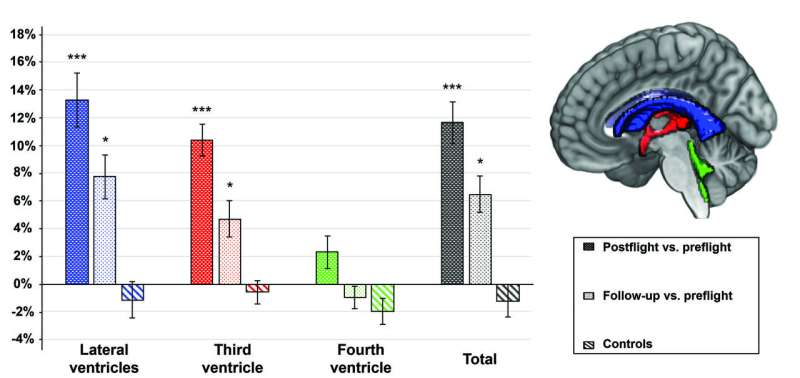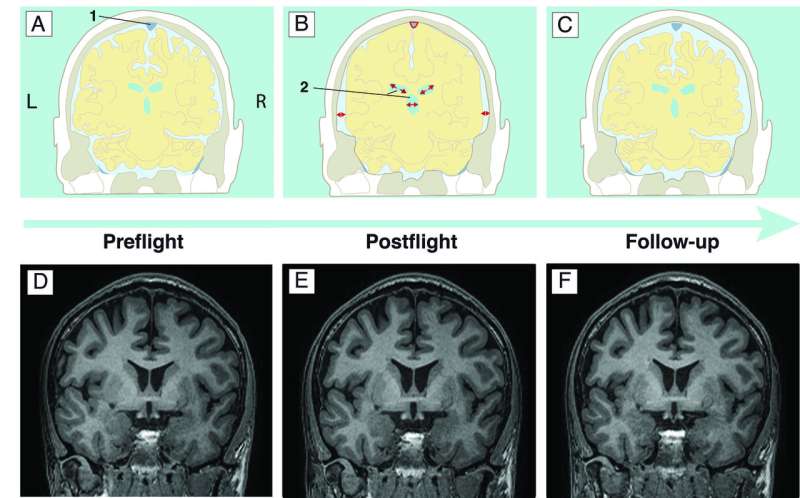May 7, 2019 report
Study shows long spaceflights lead to increase in brain ventricle size

A large team of researchers with members from Belgium, Russia, and Germany has found that people who spend a long time aboard the International Space Station experience an increase in the size of some of their brain ventricles. In their paper published in Proceedings of the National Academy of Sciences, the group describes their study of brain ventricles in cosmonauts that spent a significant amount of time in space, and what they found.
Prior research has found that long-duration space flights can have an impact on the human body—people get taller, for example, because the spine is no longer compressed by gravity. Many people have also experienced a slight loss of visual acuity. In this new effort, the researchers focused on possible impacts on the brain.
Prior research has shown that in a microgravity environment, body fluids are no longer forced downward by gravity, and because of that, they spread out. The result is more fluid in the upper parts of the body. To date, it is not known if this temporary change in body fluid has any adverse lasting effects—thus far, none have been found. To learn more about what happens in the brain as fluids shift during spaceflight, the researchers enlisted the assistance of 11 cosmonauts, who spent an average 169 days in space. Each underwent an MRI scan before launch, immediately after their return from space, and then again seven months later.
Brain ventricles are hollow cavities in the brain through which fluid moves. The researchers report an average increase in the size of three of the brain's ventricles of 11.6 percent immediately after the cosmonauts had returned to Earth. They also found that even after seven months, the ventricles had not returned to normal—they were on average still 6.4 percent larger than before exposure to microgravity. It is not known if the ventricles returned to normal after more time passed. The researchers do not know if the changes to the ventricles resulted in changes to brain function, or if it presented a danger to the cosmonauts. It is also still not known if the changes in ventricle size might be related to changes in visual acuity.

More information: Angelique Van Ombergen et al. Brain ventricular volume changes induced by long-duration spaceflight, Proceedings of the National Academy of Sciences (2019). www.pnas.org/cgi/doi/10.1073/pnas.1820354116
Journal information: Proceedings of the National Academy of Sciences
© 2019 Science X Network




















